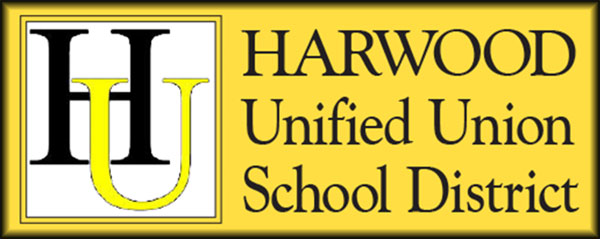The Harwood Unified Union School District Board hosted a Q&A session before the board’s regular meeting to hear community concerns and answer questions about redesign.
The October 16 meeting drew a large crowd of community members who were encouraged to speak and ask questions.
“The school cannot just wait any longer for these investments. It’s been too long. If that’s the case and we waited too long for Harwood, if we’re going to ask our friends and neighbors who struggle to make ends meet, if we’re going to ask them to invest in the schools in a significant way – it’s our obligation to make sure we have all of these hard conversations and that we ask the hard questions. We’re one community now, whichever side of the hill we live on. There is no us or them; there is just us. We have an incredible opportunity here to flip the narrative on school funding,” said Ben Smith, Duxbury.
Some Fayston residents thanked the board for the work they had done on community outreach but expressed a desire to see Fayston stay open. Additionally, there was interest in exploring how possible revenue streams could be used to offset annual district costs.
Other Fayston residents were upset that they were under the pre-Act 46 merger impression that there would not be small school closures but expanded educational opportunities for students across the district. Superintendent Brigid Nease pointed out that Valley schools added interventionists, French and Spanish at elementary and middle school levels, world languages at Thatcher Brook Elementary School, combined athletics at the middle level, expanded prekindergarten, expanded MECA (Moretown Education Center for All), and an after-school and summer program.
Bob Welter, Fayston, commented that the district isn’t acting like one district and needs to do so from here on out. He asked the board if this was an administrative agenda moving forward and encouraged the board to do further research and focus their work on the Harwood bond by separating work from other renovations in the district.
Moretown Select Board vice chair John Hoogenboom said a meeting with HUUSD Board chair Caitlin Hollister and vice chair Torrey Smith earlier that day plus board statements in The Valley Reporter were encouraging, noting only one reference to school closures.
“This is the process we are looking for. We are a unified board now, but that unified board is made up of six towns and each of us, each town, had a right to be treated fairly and equitably and that I hope that going forward you will take your time. It’s become very clear to me this morning that we are not there yet and it might take a long time before we are there. So before going forward please consider the ramifications to each and every community that this unified district serves,” said Hoogenboom.
Brian Fleisher, Waitsfield, countered Nease’s statement of “Build it and they will come” with “If you tear it down, no one will come.”
Sasha Bianchi, Moretown, said that she was pleased to hear in the September 25 report that Moretown Elementary School is thriving and projected to grow. Bianchi added that the amazing work of the MECA program should be expanded, and that Fayston Elementary School has the space to have their own similar program that could grow enrollment at the school.
Greg Shepler, a teacher at Harwood for three decades and also the president of the districtwide union, said that the union has a subcommittee on redesign and they would like to be more involved in the discussion.
“We think we have not the solutions, but we have input into this process. I can tell you that our association is concerned that a lot of the proposals out there are trying to save money by reducing staff. We understand that’s part of the balancing process. … The educational process is not going to be a sound investment to cut numerous staff and hope to get better results,” said Shepler.
Lisa Mason, Moretown, read a letter about locational, educational, social and emotional worries that some members of the community have. Mason said that the decline in enrollment would further deepen if Fayston Elementary School closes. The letter was then passed to another community member when Mason’s three minutes to speak ended.
Skip Rogers, Moretown, continued the letter, referencing the chance that closing schools will cause enrollment to drop further, leaving fewer families to pay for school renovations. Mason’s letter also asked what would happen if enrollment grew and there wasn’t enough capacity. The letter asks administrators and board members to base decisions on student outcomes and quality of education experience and to look at which elementary schools have grown in enrollment and why, hoping that it could be used to help struggling elementary schools.
Laura Schaller, Moretown, continued reading, asking the board for an adjusted timeline vote for November 2020 instead of a Town Meeting Day vote.
One member of the public asked what the board had done to help the Fayston school with enrollment. Board members noted that intradistrict choice was estabslihed and further noted that after the merger Fayston was able to use funds in its maintenance reserve fund to create a makerspace rather than add those funds to the district coffers. Others mentioned a pilot version of a program similar to Moretown’s child care and early education program is underway in Fayston.
Theresa Membrino, a Fayston board representative, said that the decline in Fayston was not organic, meaning the talk of closure immediately after choice affected Fayston enrollment along with Nease’s white paper.







